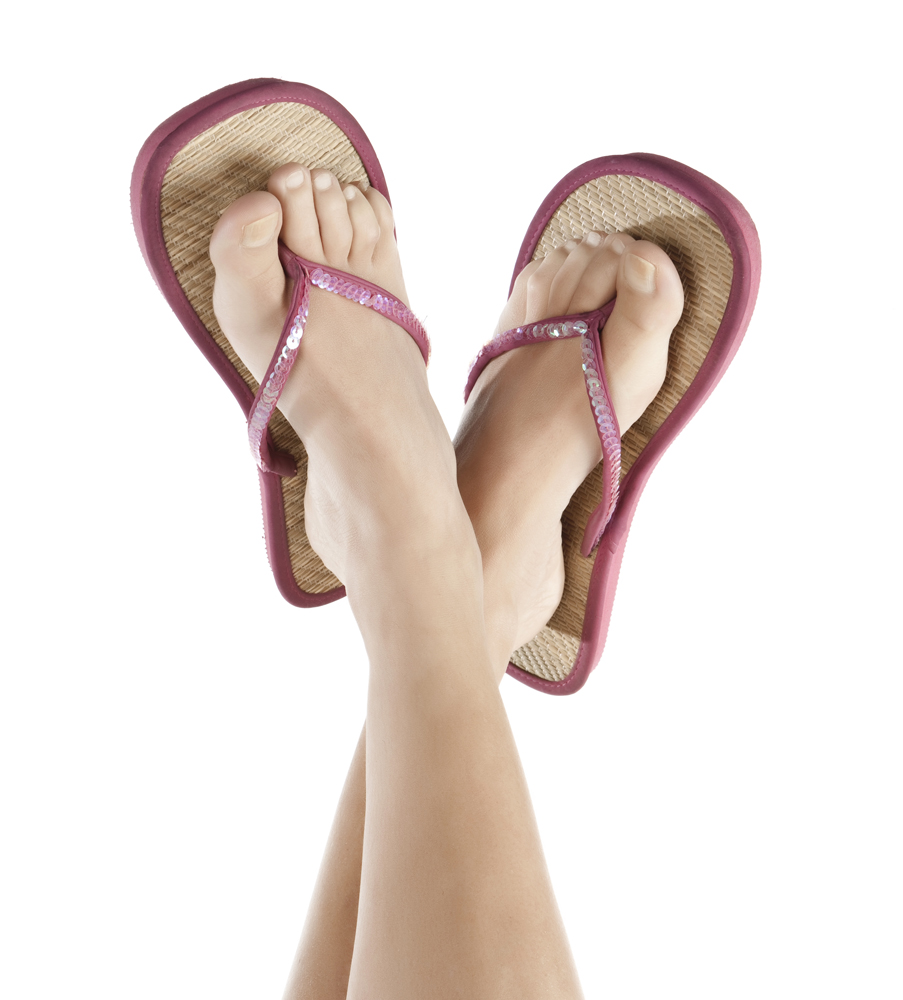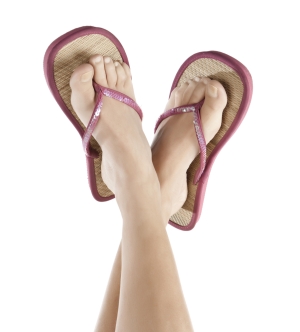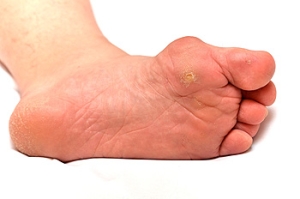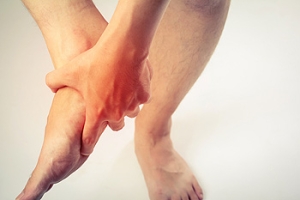Connect With Us
Featured Articles

What to Do to Keep Your Child’s Feet Healthy
Being a parent involves caring for your child in every way you can. You make sure they are eating the right food, being nice to others, and staying out of any trouble. However, it is also important that you are watchful of their health, more specifically their foot health. Maintaining good foot health in childhood is important in preventing later conditions in life from happening. As children continue to develop, their feet require different techniques of care. Here are some various ways in which you can help your child’s feet stay healthy.
A baby needs a lot of care and attention overall, but the importance of their feet should never be forgotten. Before a baby turns one, their feet change and develop greatly. It is important that during this time, a mother avoids putting tight socks on their child. She should also encourage movement of their feet so the baby can begin to feel more comfortable using them.
As a baby enters the toddler years of his or her life, they are begin to walk around. When your baby begins to take those first steps, it is crucial that they are wearing protective shoes on their feet. As a mother that is observant of your child’s feet, you may notice changes in them. This is completely normal as the feet are becoming susceptible to the activity of walking. It is normal for a toddler to be a bit unsteady or to “walk funny” at first.
When your child grows out of their toddler years, it is important that you begin to show him or her how to care for their feet on their own. Practice with your child proper hygiene in order to prevent foot fungus or infection. Since children are constantly on the move, it is crucial to be cautious of any accidents or injuries that might occur. If an injury occurs, it is advised that you take your child to be examined by a doctor immediately. Since your child is still growing, particular injuries can shift the way in which a bone or other important part of the foot is developing.
Babies and kids are always changing and growing. Your job as a parent is to make sure they stay healthy and making sure they are properly maintained. This involves proper foot care and making sure the feet stay healthy. Following this guide, your child can live a long and happy life.
The Many Disadvantages of Wearing Flip Flops
 Most people associate flip flops with sunny days and relaxed summer months. One benefit that many people enjoy is the ease of wearing this type of shoe. They do this, however, in spite of the many problems that may arise as a result of frequently wearing flip flops. A pre-existing foot condition that may become worse would be bunions, which are large bony protrusions on the side of the big toe. This may occur because the toes must consistently flex to keep this type of shoe on, often causing pressure on the side of the foot. People who have flat feet are advised to cease wearing flip flops because of the lack of support. Additional disadvantages may consist of increased heel pain, possible exposure to a fungal infection, and an altered posture, which may could affect the entire structure of the body. Research has shown if you choose to wear flip flops, it may be beneficial to significantly limit the time they are worn.
Most people associate flip flops with sunny days and relaxed summer months. One benefit that many people enjoy is the ease of wearing this type of shoe. They do this, however, in spite of the many problems that may arise as a result of frequently wearing flip flops. A pre-existing foot condition that may become worse would be bunions, which are large bony protrusions on the side of the big toe. This may occur because the toes must consistently flex to keep this type of shoe on, often causing pressure on the side of the foot. People who have flat feet are advised to cease wearing flip flops because of the lack of support. Additional disadvantages may consist of increased heel pain, possible exposure to a fungal infection, and an altered posture, which may could affect the entire structure of the body. Research has shown if you choose to wear flip flops, it may be beneficial to significantly limit the time they are worn.
Flip-flops can cause a lot of problems for your feet. If you have any concerns about your feet or ankles, contact Dr. Thong V. Truong from California. Our doctor will assist you with all of your foot and ankle needs.
Flip-Flops and Feet
Flip-flops have managed to become a summer essential for a lot of people. While the shoes may be stylish and easy to slip on and off, they can be dangerous to those who wear them too often. These shoes might protect you from fungal infections such as athlete’s foot, but they can also give you foot pain and sprained ankles if you trip while wearing them.
When Are They Okay to Wear?
Flip-flops should only be worn for very short periods of time. They can help protect your feet in places that are crawling with fungi, such as gym locker rooms. Athlete’s foot and plantar warts are two common fungi that flip-flops may help protect your feet against.
Why Are They Bad for My Feet?
These shoes do not offer any arch support, so they are not ideal for everyday use. They also do not provide shock absorption or heel cushioning which can be problematic for your feet. Additionally, you may suffer from glass cuts, puncture wounds, and stubbed toes since they offer little protection for your feet.
More Reasons Why They Are Bad for Your Feet
- They Slow You Down
- May Cause Blisters and Calluses
- Expose Your Feet to Bacteria
If you have any questions, please feel free to contact our office located in Chico, CA . We offer the newest diagnostic and treatment technologies for all your foot care needs.
Flipping Out About Flip Flops
Although it may be tempting to wear flip-flops in warm weather, they are not the best choice of footwear for your feet. Flip-flops may be ideal for the beach, pool, spa, and shared showers, but you should avoid wearing them unless it is completely necessary.
Flip-flops only have a small strip of fabric holding your foot in place, but your toes need a better grip to keep your foot in place. The repetitive gripping can lead to an overuse of your muscles, which could result in tendinitis. This is only one of the many problems that stem from wearing flip-flops too often.
Flip flops aren’t good for extensive walking because they fail to offer arch support, heel cushioning, or shock absorption. As a result, people who wear flip flops are at a higher risk of experiencing an ankle sprain. Additionally, these shoes offer little protection for your feet, putting those who wear them at a greater risk for stubbed toes, glass cuts, and puncture wounds.
Although flip flops aren’t recommended for everyday use by anyone, it is especially important for diabetics to avoid them. A diabetic foot injury can easily become very serious, and it may even lead to amputation.
If you are experiencing pain from wearing flip-flops, you shouldn’t be hesitant to replace them with a more comfortable shoe that offers more support. If your flip-flop foot pain doesn’t go away, you should seek assistance from a podiatrist right away. It is possible that you may have a more serious foot problem such as a stress fracture or arthritis.
Wounds That Don't Heal Need to Be Checked
Bunions May Lead to Additional Foot Conditions
 If you see a small bony area at the base and side of the big toe, you may have what is known as a bunion. This is typically a result of a deformed bone structure, and it appears as if the feet are not aligned correctly. There may be several causes for bunions to form, including having low arches, which may lead to instability as walking occurs, medical conditions such as rheumatoid arthritis, or injuries that the foot may have incurred. Recent research has shown that women who frequently wear high heels could cause a pre-existing case of bunions to become worse, and may notice that the toes do not have enough room to move about. The area may feel tender and appear red, possibly accompanied by swelling and a burning sensation. Complications may develop as a result of not seeking medical treatment. Many patients may experience calluses and difficulty in walking when bunions have developed, and it’s suggested to seek the counsel of a podiatrist, who may provide information about the correct treatment options.
If you see a small bony area at the base and side of the big toe, you may have what is known as a bunion. This is typically a result of a deformed bone structure, and it appears as if the feet are not aligned correctly. There may be several causes for bunions to form, including having low arches, which may lead to instability as walking occurs, medical conditions such as rheumatoid arthritis, or injuries that the foot may have incurred. Recent research has shown that women who frequently wear high heels could cause a pre-existing case of bunions to become worse, and may notice that the toes do not have enough room to move about. The area may feel tender and appear red, possibly accompanied by swelling and a burning sensation. Complications may develop as a result of not seeking medical treatment. Many patients may experience calluses and difficulty in walking when bunions have developed, and it’s suggested to seek the counsel of a podiatrist, who may provide information about the correct treatment options.
If you are suffering from bunions, contact Dr. Thong V. Truong of California. Our doctor can provide the care you need to keep you pain-free and on your feet.
What Is a Bunion?
A bunion is formed of swollen tissue or an enlargement of boney growth, usually located at the base joint of the toe that connects to the foot. The swelling occurs due to the bones in the big toe shifting inward, which impacts the other toes of the foot. This causes the area around the base of the big toe to become inflamed and painful.
Why Do Bunions Form?
Genetics – Susceptibility to bunions are often hereditary
Stress on the feet – Poorly fitted and uncomfortable footwear that places stress on feet, such as heels, can worsen existing bunions
How Are Bunions Diagnosed?
Doctors often perform two tests – blood tests and x-rays – when trying to diagnose bunions, especially in the early stages of development. Blood tests help determine if the foot pain is being caused by something else, such as arthritis, while x-rays provide a clear picture of your bone structure to your doctor.
How Are Bunions Treated?
- Refrain from wearing heels or similar shoes that cause discomfort
- Select wider shoes that can provide more comfort and reduce pain
- Anti-inflammatory and pain management drugs
- Orthotics or foot inserts
- Surgery
If you have any questions, please feel free to contact our office located in Chico, CA . We offer the newest diagnostic and treatment technologies for all your foot care needs.
Bunions
A bunion is a bump that forms at the base of the big toe. Bunions form when the big toe pushes against the next toe, which forces the big toe joint to get bigger and stick out. As a result, the skin over the bunion may start to appear red and it may feel sore.
There are risk factors that can increase your chances of developing bunions. People who wear high heels or ill-fitting shoes are more likely to develop them, in addition to those who have a genetic history of bunions or have rheumatoid arthritis.
The most obvious way to tell if you have a bunion is to look for the big toe pushing up against the toe next to it. Bunions produce a large protrusion at the base of the big toe and may or may not cause pain. Other symptoms are redness, swelling, and restricted movement of the big toe if you have arthritis.
Nonsurgical methods are frequently used to treat bunions that aren’t severe. Some methods of nonsurgical treatment are orthotics, icing and resting the foot, taping the foot, and pain medication. Surgery is usually only required in extreme cases. However, if surgery is needed, some procedures may involve removing the swollen tissue from around the big toe joint, straightening the big toe by removing part of the bone, or joining the bones of your affected joint permanently.
Your podiatrist will diagnose your bunion by doing a thorough examination of your foot. He or she may also conduct an x-ray to determine the cause of the bunion and its severity.
Is Foot Pain A Common Ailment?
 Many people may experience several types of foot pain throughout their lives. Some conditions may not be as serious as others and may be treated at home. These may include blisters, which are small areas that are filled with fluid, and typically develops from wearing shoes that do not fit correctly. Additionally, mild athlete’s foot, which may originate from fungus that thrives in wet areas, such as public showers and surrounding areas, may possibly be treated at home. Other conditions may prove to be more severe, and will need to be treated by a podiatrist. Many patients experience gout, which is an inflammation of the joints surrounding the big toe, and this may often be caused by unhealthy dietary choices. Additionally, severe foot pain may be caused by bunions, which appears to be a bony protrusion on the side of the big toe. This condition may cause extreme pain and and it’s suggested to consult with a podiatrist for a proper evaluation.
Many people may experience several types of foot pain throughout their lives. Some conditions may not be as serious as others and may be treated at home. These may include blisters, which are small areas that are filled with fluid, and typically develops from wearing shoes that do not fit correctly. Additionally, mild athlete’s foot, which may originate from fungus that thrives in wet areas, such as public showers and surrounding areas, may possibly be treated at home. Other conditions may prove to be more severe, and will need to be treated by a podiatrist. Many patients experience gout, which is an inflammation of the joints surrounding the big toe, and this may often be caused by unhealthy dietary choices. Additionally, severe foot pain may be caused by bunions, which appears to be a bony protrusion on the side of the big toe. This condition may cause extreme pain and and it’s suggested to consult with a podiatrist for a proper evaluation.
Foot Pain
Foot pain can be extremely painful and debilitating. If you have a foot pain, consult with Dr. Thong V. Truong from California. Our doctor will assess your condition and provide you with quality foot and ankle treatment.
Causes
Foot pain is a very broad condition that could be caused by one or more ailments. The most common include:
- Bunions
- Hammertoes
- Plantar Fasciitis
- Bone Spurs
- Corns
- Tarsal Tunnel Syndrome
- Ingrown Toenails
- Arthritis (such as Gout, Rheumatoid, and Osteoarthritis)
- Flat Feet
- Injury (from stress fractures, broken toe, foot, ankle, Achilles tendon ruptures, and sprains)
- And more
Diagnosis
To figure out the cause of foot pain, podiatrists utilize several different methods. This can range from simple visual inspections and sensation tests to X-rays and MRI scans. Prior medical history, family medical history, and any recent physical traumatic events will all be taken into consideration for a proper diagnosis.
Treatment
Treatment depends upon the cause of the foot pain. Whether it is resting, staying off the foot, or having surgery; podiatrists have a number of treatment options available for foot pain.
If you have any questions, please feel free to contact our office located in Chico, CA . We offer the newest diagnostic and treatment technologies for all your foot care needs.
Foot Pain
The feet, being the foundation of the body, carry all of the body’s weight and are therefore prone to experiencing pain and discomfort. If you are experiencing foot pain, it is important to determine where in the foot you are experiencing this pain to help discover the cause of it. While pain can be experienced virtually anywhere in the foot, the most common sites of foot pain are in the heel and ankle.
Heel pain can be due to a multitude of conditions including plantar fasciitis, Achilles tendinitis, and heel spurs. Pain experienced in the ankle can be a sign of an ankle sprain, arthritis, gout, ankle instability, ankle fracture, or nerve compression. In more serious cases, pain in the foot can be a sign of improper alignment or an infection.
Foot pain can be accompanied by symptoms including redness, swelling, stiffness and warmth in the affected area. Whether the pain can be described as sharp or dull depends on the foot condition behind it. It is important to visit your local podiatrist if your foot pain and its accompanying symptoms persist and do not improve over time.
Depending on the location and condition of your foot pain, your podiatrist may prescribe certain treatments. These treatments can include but are not limited to prescription or over-the-counter drugs and medications, certain therapies, cortisone injections, or surgery.
If you are experiencing persistent foot pain, it is important to consult with your foot and ankle doctor to determine the cause and location. He or she will then prescribe the best treatment for you. While milder cases of foot pain may respond well to rest and at-home treatments, more serious cases may take some time to fully recover.








